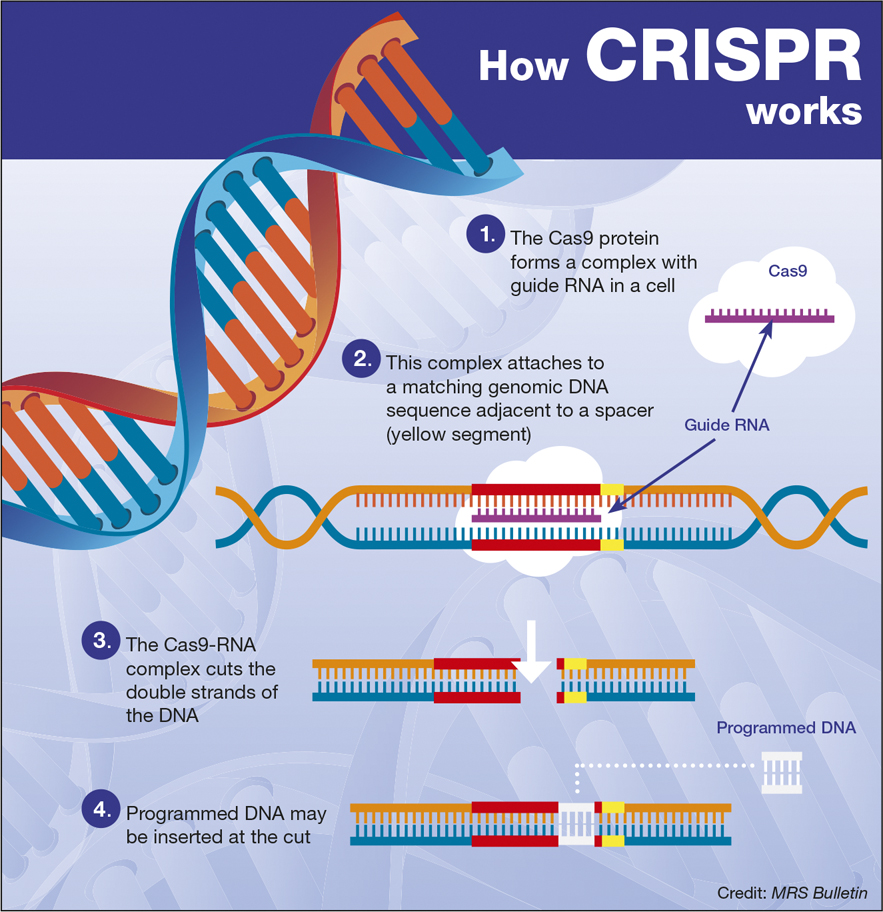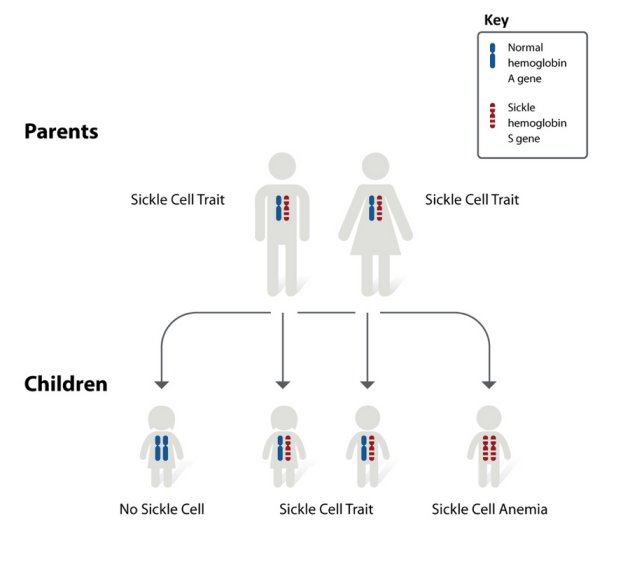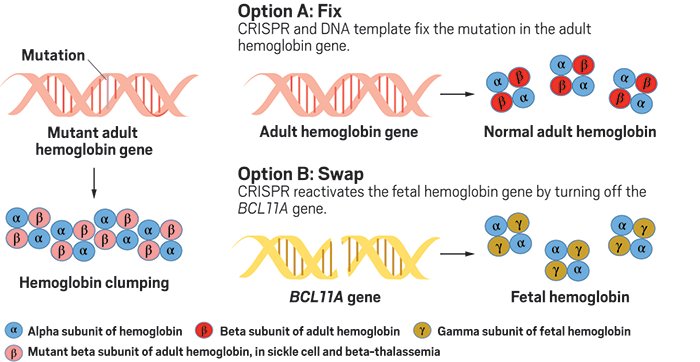In all of modern science there is perhaps no more rapidly advancing field than that of genetic research. Much of that progress has come about because of the development of the molecular gene editing tool CRISPR (which stands for Clustered Regularly Interspaced Short Palindromic Repeats) that allows biochemists to literally cut and/or paste sections of DNA into the chromosomes of living cells. I have talked about CRISPR several times in previous articles, see posts of 2 March 2019, 12 January 2019, 1 December 2018, 1 September 2018 and 5 August 2017, and the full potential of CRISPR is still only being guessed at.

Now the latest experiment is making a bold and daring attempt to treat fully grown persons who are sufferers of the inherited genetic disorder Sickle Cell Anemia, a condition that affects about 100,000 people living here in the United States and millions of others worldwide. This is the first ever attempt to use CRISPR to modify the cells of adult patients in the hopes that the altered cells will allow those patients to live a more normal life.

Before I continue let me talk a little bit about the genetic disease Sickle Cell Anemia. This is a disorder that affects the bone marrow and leads to the production of red blood cells with a defective protein that causes the cells to be deformed, sickle shaped. These deformed blood cells are thereby unable to carry a normal amount of oxygen leading to a permanent and in some cases crippling weakness in the affected person. Most sufferers of Sickle Cell Anemia are ethnic African or African-American and since the disease is inherited it can devastate a family for generations.

The procedure being tested is to take cells from the patient’s bone marrow and modify the cells DNA using CISPR in order to make them produce a protein that is normally only formed by the human body while in the womb and during early childhood. It is hoped that the production of this protein will correct the deformations of blood cells caused by the defective protein, thereby alleviating the anemia caused by sickle cell.

The experimental treatment for Sickle Cell Anemia is being conducted at eight hospitals and clinics in North America and Europe and is being overseen by CRISPR Therapeutics of Cambridge Massachusetts in association with Vertex Pharmaceuticals of Boston. The current plan is to have up to 45 patients take part in the initial trials of the experiment.

It will be months before the researchers know for certain whether or not the modified cells are even producing the desired protein let alone if the protein is actually helping to improve the health of the study’s patients. Then, even if there is strong evidence that the procedure has worked, there is the question of how long will the benefits last? Will this technique produce a permanent cure or will the effect be only temporary?
These are questions that only time can answer, but we are at the threshold of a new medical technology. This may be the first attempt to treat patients with a genetic disease by using CRISPR but it certainly will not be the last.
